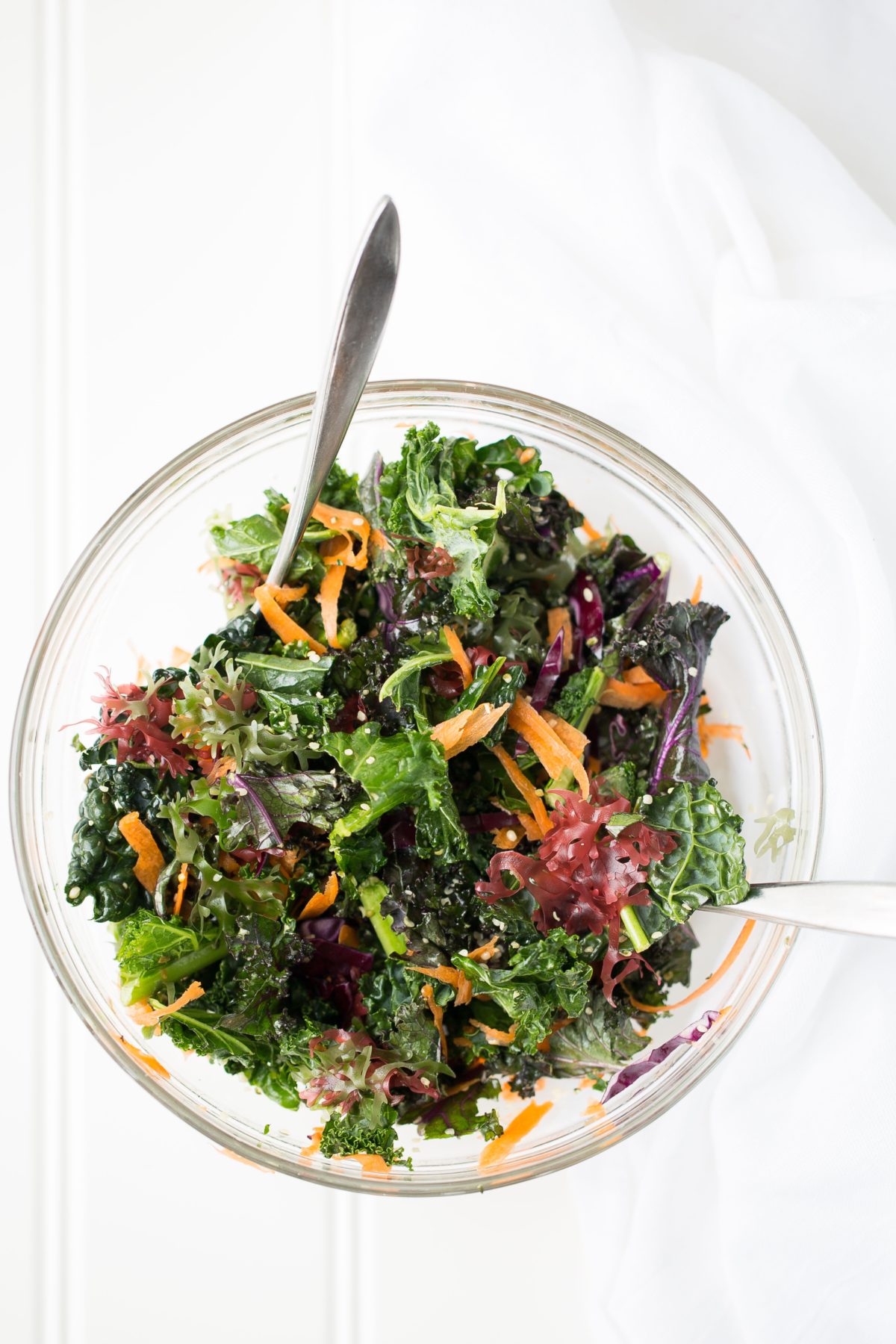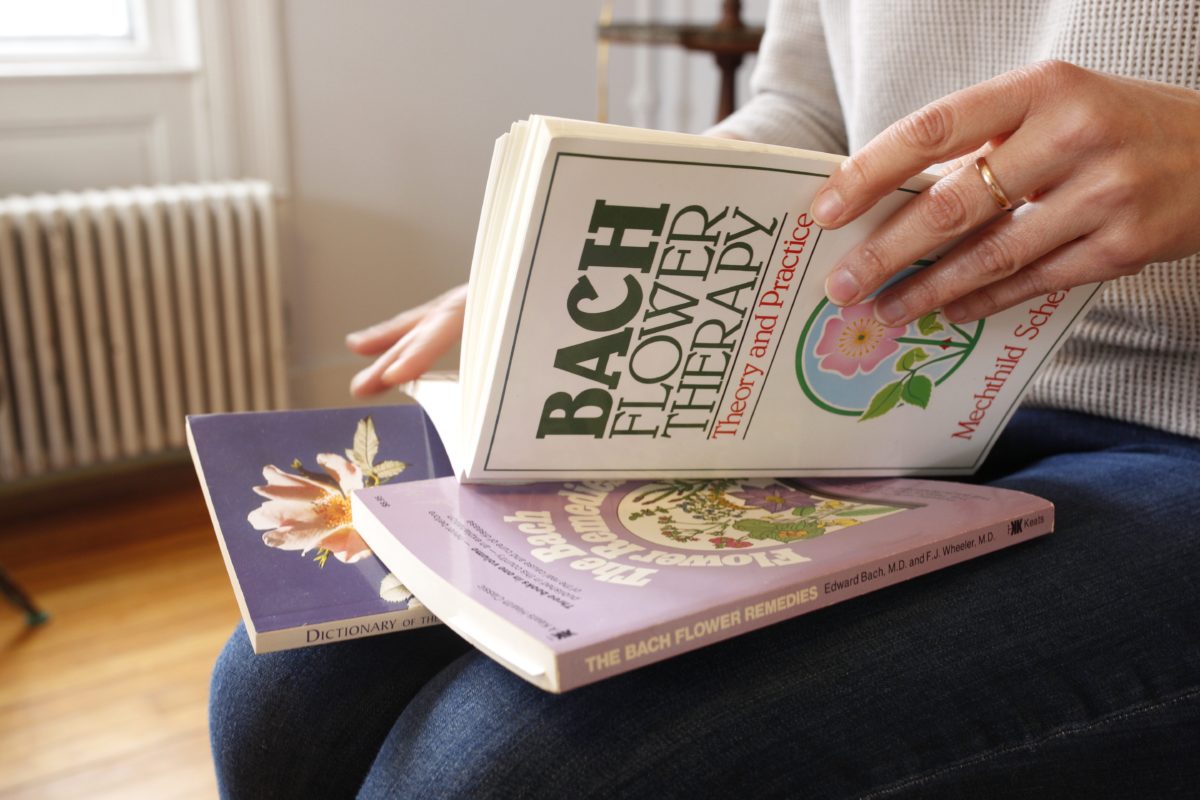
10 Simple Vitalist Practices To Support Well-Being
We are a part of nature, and nature is wise. The Vitalist tradition of herbalism honors this innate wisdom and connection.
The Vitalist tradition is a type of herbal practice that looks at the whole person — deeply investigating, looking beyond surface symptoms alone, until the root cause of why a client has come to work with you is found. Vitalist herbalists do not work in a heroic manner, meaning they do not push the natural energy and wellness abilities of the body with allopathic suggestions. Instead, they honor and support the process of wellness through food, water, exercise, meditation, and positive affirmation (Ganora, 2016).
As a trained Vitalist herbalist, I often start by suggesting vitalist practices to my clients. Vitalist practices pair well with herbal protocols because they both address the foundation of wellness as well as support any presenting symptoms.
Most traditional systems have given due importance to Vitalist practices. Nowadays, you might see these types of approaches labeled as “lifestyle” or “self-care” practices. Because Vitalism aims to integrate mind, body, and spirit into the path of wellness, incorporating simple practices into one’s daily life can help support well-being before herbs become part of the picture. This is often referred to as nature cure.
Nature cure has been part of the Vitalist tradition since nineteenth century Europe. At its most basic, Nature cure is a system of approaching conditions with natural elements such as water, air, diet, herbs, and sunshine (Kirchfeld & Boyle, 1994). This modality incorporates the whole person — the physical body, the mind, and the spirit.
The main tenant of Vitalist herbalism is to remove the obstacle to wellness. Though the word “remove” signals taking something away, I often find that initially adding to one’s lifestyle boosts vitality in an encouraging manner. In this way, when or if something needs to be removed, it is much less jarring since that space has already been filled up by something else that feels good.
This is where Vitalist practices come into play. In this post, I’d like to share 10 simple Vitalist practices that can have a big impact on one’s well-being. I have found these simple practices to be supportive in increasing the vitality and well-being of the clients I see in my personal practice.
10 Simple Vitalist Practices To Support One’s Well-Being

1. Nutrition
One of the primary places I like to investigate when thinking about ways to increase vitality is our source of nourishment. Our food, after all, truly is the building blocks for our muscles, bones, and emotional landscape. Embedded in Hippocrates’ philosophy was a focus on the power of wellness in everyone and that one of the most profound tools for wellness we have is our food.
We live in a time where food allergies and sensitivities are acknowledged and honored by many. It’s also not uncommon to go years without realizing there may be a food in our diet that does not serve us. On the other hand, there could be a food that we are not eating, or not eating enough of, that could greatly benefit the way we feel.
Within the Vitalist tradition, removing the obstacle to wellness could mean removing food allergens or reducing sugar consumption. It could mean building your system up with leafy greens, animal protein, and fermented foods. It could also mean incorporating herbal bitters into your diet. Digestion is often viewed as the seat of wellness. If we can support our digestion, we can support how the rest of our body feels, while honoring our physical constitution, phase of life, and nutritional needs at the same time.

2. Sleep
When we are stressed, feeling blue, or under the weather, our sleep is often the first thing to diminish. We might stay up too late, wake too early, or find our minds racing at 3 AM.
Supporting a kind relationship with sleep is deeply impactful on one’s well-being. In moments when life feels like it’s building up, I try to offer myself and others the suggestion to sleep 10-12 hours for three days in a row. If you can do this once a week, brilliant. If you can only do it once a month, this is a great start, too!
The systems of our body process, restore, and replenish during our sleeping hours. To incorporate this Vitalist practice into your life, try to go to bed just one hour earlier, give yourself an hour of screen-free time (more on this below) before getting into bed, have a cup of chamomile tea, or take a bath with Epsom salts. Better yet, try all four!

3. Burst Exercise
Have you ever had a stressful interaction at home or at work and then sprinted around the block or found a private space to jump up and down a handful of times? This type of burst exercise allows us to move the adrenaline out of our system when we find ourselves in a flight or fight response, which in modern day society, we feel a lot.
The beauty of burst exercise is that it’s quick! It doesn’t deplete you or bring about more stress to your system. You can take 10 minutes just a couple times a day to boost your vitality. Burst exercise is just that — a burst of exercise. Often our long stints at the gym can tire or stress our bodies even further. Practicing burst exercise allows calisthenic-like movement, sweat, and release in shorter bursts throughout the day.
One of my favorite ways to incorporate burst exercise into my day and increase vitality through sweating, laughing, and releasing emotion is to put together a playlist of five of my favorite upbeat songs and dance wildly around my house. I jump, shake, bring in authentic movement, and boogie! Below are some other ways to incorporate the Vitalist practice of burst exercise into your day.
- Run around the block
- Jump on a trampoline
- Lunges and squats
- Jumping jacks

4. Emotional Health
Supporting our emotional body is important for our overall well-being. Just as important as the physical body, the emotional body also needs tending to. According to Henry Lindlahr, “Every thought and every emotion has its direct effect upon the physical constituents of the body. The mental and emotional vibrations become physical vibrations and structures. Discord in the mind is translated into physical disease in the body, while the harmonies of hope, faith, cheerfulness, happiness, love and altruism create in the organism the corresponding health vibrations…” (Lindlahr, 1913, p. 27).
One Vitalist practice we can incorporate into our lives is the use of flower essences to support our emotions. According to Dr. Edward Bach and other flower essence practitioners, flower essences address the emotional side of wellness through identifying and shifting habits and patterns that may no longer serve us.
5. Hydrotherapy
Our bodies are made of water. We live on a planet with a high concentration of water. Water is a true wellness resource that I highly revere and feel gratitude for. Often when our digestion is sluggish, or we feel hungry or find ourselves with a headache, we can support that by drinking more water. Plus, water is a menstruum for our beautiful herbal teas.
- Drink half your weight in ounces (or, to begin, just drink two more glasses of water a day).
- Alternate between hot and cool water in the shower or bath.
- Splash your feet in cool water before you get out of the bath.
- If you can, indulge in a hot springs adventure to revel in the mineral pools.
Have you noticed the soothing, uplifting, and energizing effects of water on your system?

6. Positive Thoughts & Words
I find that repeating a positive affirmation or mantra can be a grounding experience. This Vitalist practice can help reframe daily stressors and bring you back to a place of positivity and gratitude. Positive affirmations can be as simple as saying, “I gratefully take this food into my body for nourishment,” or “I see so much beauty in the world.”
A thorough study from Yale University on “Gratitude as a Psychotherapeutic Intervention” has shown that people that hold gratitude experience more joy and enthusiasm and stronger ability to cope with everyday stress (Emmons, 2013).
Another idea is to take some time at the end of each day to write down three things you were grateful for that day. This daily practice increases positive thinking by attuning yourself to the good things in your life.
Repeating positive thoughts out loud, to yourself in a mirror, quietly in your head, or just as a gift you send out to the world feels great. I often notice that I can’t hold gratitude and fear at the same time. Do you notice this too?

7. Meditation
One of the beauties of meditation is that you can do it anywhere: Stuck in traffic, waiting in line at the market, in an intentional space, or walking in the woods. Meditation supports both the mind and body and can take the form of a traditional sitting meditation, a guided or group meditation, or walking meditation. It is commonly, and with high success, used in modern society as a way to navigate stress and release tension. This stress reduction allows you to find a deeper state of relaxation, which, let’s admit, we could all benefit from (Mayo Clinic, 2017).
Meditation can look different to everyone but, however it looks, taking time to get quiet is beneficial.

8. Connection with Nature
There is no doubt that we live in a very tech-heavy time where most jobs have us sitting in front of a computer. It can feel hard to get outside and experience the creek rushing by, the blooming wildflowers, or the cool, moist morning grass. Studies have found that having a view of nature through a window while working has a positive effect on overall mood, stress, satisfaction, and productivity (Shin, 2013). Spending dedicated time in nature increases these effects even further and decreases anxiety, anger, and depression (Li, 2009).
By connecting with rhythms in nature, we are connecting to the nature within us. It feels enlivening to spend a weekend camping, half a day hiking, or an hour sitting by moving water. Can you create a little more space to connect with nature on a more regular basis?

9. Screen-free Time
In our modern society, it’s likely you spend a fair amount of time in front of a screen. This can be a computer or computer-like device, a phone, or a television. We are bombarded with information from many sources, all at once. It’s understandable that overwhelm, racing thoughts, trouble sleeping, or overstimulation might begin to creep in. Have you ever given yourself a break?
- Can you dedicate a day or even just an hour before bed to be screen-free?
- Can you leave your phone or computer outside of the bedroom and wait until you have really stepped into your day before checking email, social media, or texts?

10. Incorporating Creativity
Are you finding time in your day to do what you love? Do you enjoy writing, reading, or painting? Do you express yourself through dance, playing music, or being in nature? Can you create a routine for yourself so that you play guitar or dance in the kitchen to your favorite music while dinner is in the oven? How can you touch back in with the simple pleasures in life that you love?
Psychologist and health care practitioners are noticing a strong connection between artistic and creative expression and enhancement in overall wellness. Giving yourself time to engage with creative practices has shown to offer an improvement on stress, depression, and a reduction in chronic illness symptoms (Stuckey, 2010).
How do you feel when you create? Creativity does not have to mean pursuing the arts professionally. It can be a way to process without any pressure. Remember how great it felt to color, draw, and paint as a child?
Finally
The Vitalist focus on the body is wide spreading, deeply connected, and springs from a place of honoring the deep, innate wisdom of the vessel we inhabit. The body knows how to heal, the body listens, the body speaks. The body — just like the earth — is a wisdom holder. If we listen deeply, we can hear the feedback. What feels good? What is your body asking? What happens when you eat specific foods? What does it feel like to have time to rest? This information is profound on the path of wellness. The Vitalist tradition allows you the space to sit with a practitioner as you unpack and discover what your body has to say and support you in a process of bringing your vital force alive.

REFERENCES:
Emmons, R. A., & Stern, R. (2013). Gratitude as a psychotherapeutic intervention. Journal of Clinical Psychology: In Session, 69(8), 846-855. doi: 10.1002/jclp.22020
Kirchfeld, F., & Boyle, W. (1994). Nature doctors: Pioneers in naturopathic medicine. Portland, OR. NCNM Press.
Li, Q. (2009). Effect of forest bathing trips on human immune function. Environmental Health and Preventive Medicine, 15(1), 9-17. doi: 10.1007/s12199-008-0068-3
Lindlahr, H. (1914). Nature cure. Chicago, IL. Nature Cure Publishing.
Mayo Clinic. (2017). Meditation: A simple, fast way to reduce stress. [Online Article]. Retrieved from https://www.mayoclinic.org/tests-procedures/meditation/in-depth/meditation/art-20045858
Ganora, L. (2016). Vitalism. [Word document]. Lecture notes from Colorado School of Clinical Herbalism.
Shin, W. S. (2007). The influence of forest view through a window on job satisfaction and job stress. Scandinavian Journal of Forest Research, 22(3), 248-253. doi: 10.1080/02827580801262733
Stuckey, H. L. (2010). The connection between art, healing, and public health: A review of current literature. American Journal of Public Health, 100(2), 254-263. doi: 10.2105/AJPH.2008.156497








